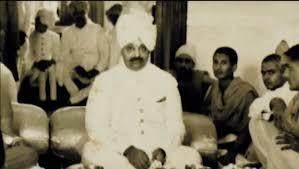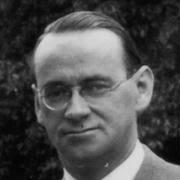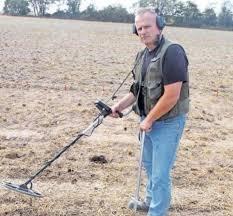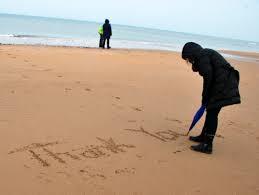Results: Unsung Heroes Of World War II
Published on 11/15/2019
With Remembrance Day and Veteran's Day behind us, it is important to remember the sacrifices not just on November 11, but every day, and not to take our freedom for granted. And while these stories are not focused on veterans, these next few are definitely the definition of heroes.

QUESTIONS
GO to COMMENTS
Comments
1.
1.
During the Second World War, orphaned Polish children — Jews and Catholics alike — faced an uncertain future, but many were saved by an unlikely hero. Known now as the 'Indian Oskar Schindler', the Maharaja (member of Indian nobility) Digvijaysinhji Ranjitsinhji Jadeja of Nawanagar, a state in Gujarat not only agreed to accept about 1,000 Polish children and look after them, he also established schools and treated these children as his own, making sure each child had a bed of their own, and food, clothing and medical needs. Warsaw has a "Good Maharaja Square" named after the Maharaja. Poland also named a school after the Maharaja, who was passionate about children's education. The Maharajah was awarded the President's Medal, Poland's highest honour. The children who returned to Poland even formed an association called "Poles in India." This interesting story was captured in a 2017 documentary film called "Little Poland in India", by producer and director Anu Radha. Have you heard about this man, and did you see the documentary?

Yes
7%
171 votes
No
83%
1898 votes
Undecided
10%
230 votes
2.
2.
Not all heroes were on the right side. Georg Duckwitz was working for the Nazi administration as a diplomat in the occupational government in Denmark. In 1943, when it became clear that Denmark's Jews were on the verge of being rounded up, Duckwitz got word to the head of the Danish resistance, who worked with Copenhagen's chief rabbi and sympathetic Danes to organize a rescue. Nearly 99% of Denmark's 10,000 Jews survived the war, most being smuggled to Sweden. Duckwitz's treason was never discovered, and he served out the war as an administrator. On March 29, 1971, Yad Vashem decided to recognize Duckwitz as Righteous Among the Nations, one of their top honours to non-Jewish individuals who helped the Jews during WWII . Do you admire someone who was willing to risk his own position, and even life, to help others like this man?

Yes
68%
1570 votes
No
15%
337 votes
Undecided
17%
392 votes
3.
3.
Bob Gates and Cyril Sutherland of P.E.I. both died when their plane was shot down by the Germans during WWII. Their families did not know too many details, until last year, when both families were able to piece together what happened when the Gates family discovered that Erik Wieman, a Dutch man living in Germany, was researching the crash site. He was trying to contact the family members of all 23 people aboard the flight, which included 20 Canadians, two men from Britain and one from Australia. The families now know that the flight was heading from England to India and had navigation problems because of bad weather. It veered into German territory and was shot down and crashed in Neuleiningen, about 100 kilometres southwest of Frankfurt. Thanks to the work of Wieman and his team, the crash site — now a cornfield — has been located and many artifacts have been recovered including airplane parts, seatbelts, coins, luggage, and combs belonging to the men. For Wieman, the goal is to bring hidden crash sites and the stories of those who perished, to life. For the families of these brave soldiers, it brings a sense of closure. The group's work is done in their spare time, with their own equipment and their own money, and a memorial featuring a monument to the victims is planned for 2020. Does it amaze you that after all these years, some people are still trying to brings closure to the families of those who lost their lives in WWII?

Yes
54%
1241 votes
No
28%
638 votes
Undecided
18%
420 votes
4.
4.
These three stories are only three out of many, of the people who stepped up during and after this tragic time, and helped either save lives or bring closure to families who lost someone. Have you heard of any stories you would like to share?

Yes, and I will in the comments
4%
82 votes
Yes, but I do not want to share at this time
12%
278 votes
Not sure
23%
537 votes
No
61%
1402 votes
COMMENTS


